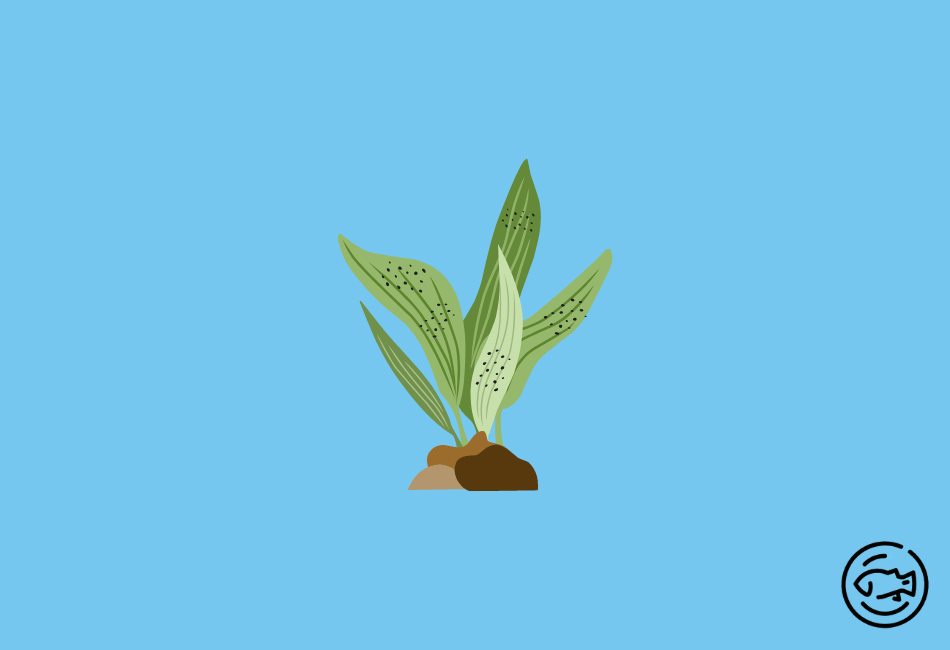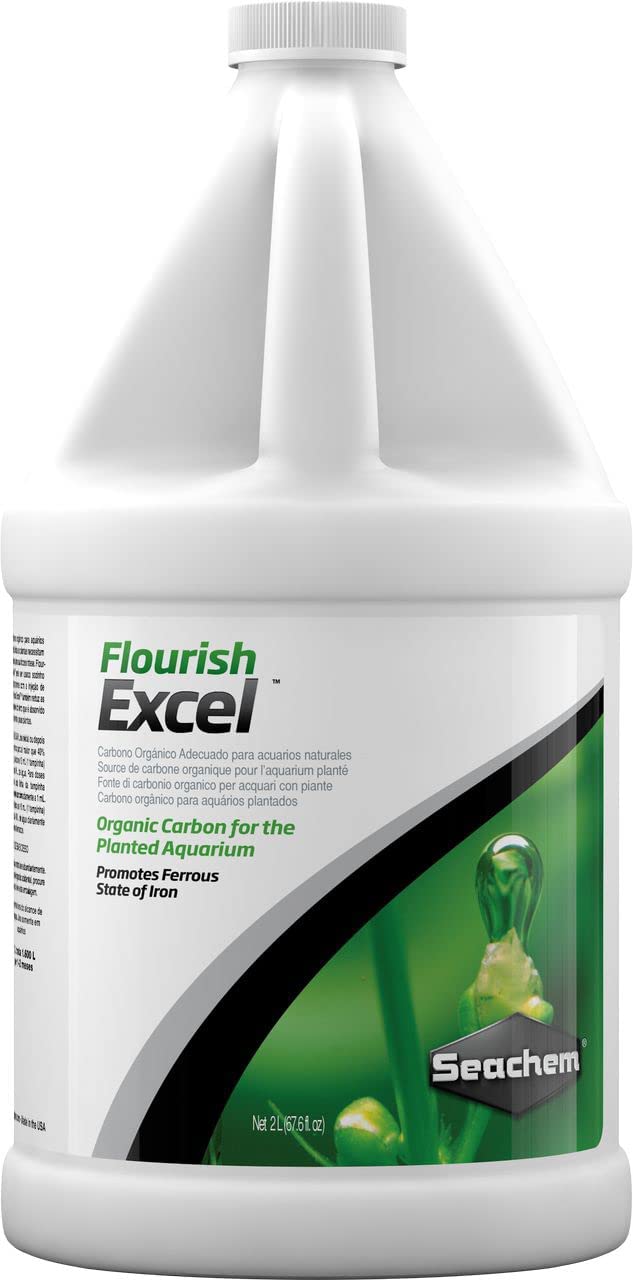If you’ve witnessed some black spots on aquarium plants in your tank, you might be troubled by this issue that needs attention. Often, your suspicion would be correct as blackish growth on aquarium plants is commonly caused by ‘black beard algae,’ a challenging type of algae that can overtake your aquarium if not swiftly handled.
However, sometimes, these dark blemishes on plants may merely result from nutrient shortages or improper aquarium lighting. In this post, we’ll examine the origins of these black spots or patches on water plants and propose strategies to correct the situation.
What Is Black Beard Algae?
Black beard algae, scientifically known as Audouinella sp. or Rhodochorton sp., is part of the red algae lineage. This provides an insight into its diverse palette—it isn’t always limited to black!
These algae can exhibit shades of red, brown, gray, or deep green. This species is also generally referred to as black spot algae, brush algae, or simply ‘black algae.’
Initially, it makes its presence known as tiny specks on aquatic plants, stones, driftwood, and other aquarium decor. As it flourishes, it assumes a fluffy or fuzzy texture, leading to its namesake moniker—black beard algae, or alternatively, black brush algae.
How Did Black Spots Emerge On Aquarium Plants?
Black beard algae propagate through minuscule algae spores. Due to their diminutive size, they can navigate around without being perceived.
They can migrate from one aquarium to another when transferring plants, tank decorations, or even aquatic creatures. If you spot black specks on an aquarium plant in a pet store, resist the urge to purchase it! It’s far tougher to eliminate Black Beard Algae than prevent it—proactive avoidance is always preferable.
Occasionally, black beard algae may remain latent within an aquarium for extended durations, lying in wait for optimal light, CO2, and nutrient conditions to manifest. Modifying these factors often becomes crucial for eradication if you’re dealing with a black algae infestation.
What Leads To The Formation Of Black Spots On Your Aquarium Plants?

The formation of black spots on your aquatic plants can be attributed to excess nitrate, problems with phosphate, a lack of sufficient light, the occurrence of beard algae, or potential temperature complications within the tank.
These factors could detrimentally affect your plants and lead them to develop dark speckles.
As an aquarium caretaker, it’s essential to take a step back and conduct a detailed examination—after all, looking after the fish is just one of many responsibilities you must shoulder.
Don’t worry as your aquarium plants won’t be as challenging as your fish but can still display some troubling symptoms. The most noticeable and potentially lethal among these is likely to be the darkening of the leafage.
Nitrate Surplus
Upon noticing peculiar alterations in your aquatic plants, such as discoloration and the emergence of black spots, it’s natural to feel concerned.
Understand that nitrate is a crucial nutritional element for your water plants, essential for their survival. However, an overabundance of anything can be damaging, and nitrogen is no exception, with its surplus resulting in damage.
Excessive nitrogen can inhibit iron production within the plant, leading to iron deficiency at a cellular level. This condition causes leaves to change color. However, it won’t be long before your leaves darken, often signaling the demise of your aquatic plant.
In essence, treating nitrogen toxicity can be challenging, although it’s reversible, indicating that the plant isn’t in immediate danger.
Phosphate Complications
An abundance of phosphate typically results from excess decomposing plant and fish debris in your aquatic environment. While phosphates are consumed, filtered, or otherwise removed from the tank, any residual presence is a cause for concern.
In simpler terms, your water filtration system must always function optimally. Therefore, ensure regular maintenance checks and eliminate any decaying matter from the aquarium glass to prevent damage and weakening of the plants.
Inadequate Lighting
Light plays a vital part in plant growth, but too much light in an aquarium environment can be detrimental.
It could cause your aquatic plants to overconsume gases in their surroundings, leading to many issues, notably impairing their photosynthetic capacity. This issue results in leaf discoloration, initially manifesting as small circular patches.
Talking about lighting issues, scarce light exposure can also pose a problem. The formation of algae on your aquarium walls can obstruct sunlight from reaching your plants, leading to their discoloration.
Black Beard Algae
The Black Beard Algae are indeed a problem in your aquatic habitat. These dark algae multiply quickly, tarnishing any surface they occupy. They are known to attach themselves to plants and can increase aggressively on them.
Like your typical algae, they obstruct sunlight from reaching your plants. However, they are essentially harmless, often leading to them being overlooked until they create a problem.
Black brush algae also compete with plants for nutrients, which can cause your plants to darken too. Hence, it’s crucial to maintain your aquarium’s cleanliness and prevent these algae from establishing themselves.
Temperature Issues
External conditions are just as significant as those within the aquarium. Most tanks demand an average water temperature of about 85 degrees Fahrenheit, with a preference for cooler rather than warmer conditions.
Sometimes, negligence in monitoring our water temperature contributes to issues, stressing the plants and leading to a departure from their usual health status.
This is particularly true when our freshwater aquariums lack fish for extended durations.
Consequently, your aquarium will primarily sustain plant life, leading to a probable increase in temperature, which can be fatal for your plants.
If persistently exposed to such conditions, your plants will eventually change color to brown and black.
How To Manually Eliminate Black Spot Algae
Similar to other forms of algae, black spots can be manually scrubbed off, subjected to a hydrogen peroxide wash, a mild bleach solution, or treated with a specialized product like Seachem Flourish Excel, which can act as a herbicide in higher concentrations.
Seachem Flourish Excel

- Organic carbon contributions to the planted aquarium environment
- Flourish Excel acting as a provider of easily accessible organic carbon
- Possesses a photosynthetic intermediate usable either in conjunction with or without CO2 injection
However, it is essential to exercise extreme caution when introducing these chemicals into your aquarium, as they can adversely influence the well-being of your fish and aquatic plants.
Indeed, certain aquarium enthusiasts steer clear of these chemicals to mitigate potential health hazards to their aquatic animals.
Should you decide to employ chemicals, undertake comprehensive research on the procedures to evade catastrophic outcomes?
No one wishes to be responsible for fish mortality due to improper treatment.
Regardless of the physical treatment you opt for, black beard algae are notoriously resilient and difficult to eradicate, so it may be advantageous to enlist the aid of algae-consuming aquatic pets to address the issue.
Tank Mates & Invertebrates That Consume Black Beard Algae
Personally, I’m not keen on using chemicals and usually lean towards natural remedies for organic issues. If you’re dealing with an algae outbreak, look for an aquatic fish that will consume that specific algae for you!
Black beard algae may not be the preferred meal for numerous algae-eating fish compared to other algae varieties, but fortunately, there are still some species that will dine on it:
also read: Hellfire Torch Coral
Fish That Will Eat Black Beard Algae
There are several myths circulating around the aquatic community regarding which fish species consume black beard algae. Many reliable algae consumers like Plecostomus and Oto catfish will tackle it only when other food sources are scarce.
Flagfish, panda garra, and flying foxfish have been proposed solutions; however, anecdotal evidence from aquarists suggests these species tend to favor other algae types over the notorious black beard variety.
The champion when it comes to eradicating black beard algae seems to be the Siamese algae eater (Crossocheilus oblongus). Unlike its relative, the Chinese algae eater, the Siamese variant is a peace-loving creature that feels comfortable in solitude or social clusters.
These beneficial scavenger fish are the only species I’ve encountered that genuinely seem to enjoy devouring black beard algae.
Numerous aquarists have shared their joy of witnessing their Siamese variant actively vacuuming up significant amounts of the black spots from the plants.
Invertibrates That Consume Black Beard Algae
In a similar way to numerous algae-consuming fish, most invertebrates appear to partake in black beard algae consumption only under compulsion!
Nerite snails, Pagoda snails, Amano snails, and Ramshorn shrimp have all been noted to consume Black Beard Algae, but when the specifics are closely examined, this is only the case when other sustenance is scarce.
Ultimately, the Siamese algae eaters appear to hold the prime position for eradicating black beard algae!
Enhance Aquatic Environment Health
Given that black beard algae flourishes in suboptimal water conditions, one of the most effective strategies to decrease its presence is to upgrade your aquarium’s cleanliness.
Steer clear of excessive feeding, and promptly remove any leftover fish food after several minutes to inhibit it from polluting the water.
Implement partial water replacements with fresh water, clean your substrate, and routinely service your aquarium filter to minimize elevated concentrations of nitrates and phosphates that can instigate algae outbreaks.
Adjust Your Lighting
Excessive or improper range lighting can lead to outbreaks of Black Beard Algae or Black spots on aquarium plants. Hence, consider modifying your lighting arrangement to an intensity and range preferred by your plants but not by algae.
The encouraging news is that numerous aquarists have claimed victory over their black beard algae by implementing this method!
If you need more clarification about correctly tuning the light, seek advice from your local specialist pet retailer to understand what type of lighting would be optimal for your specific setup.
Modify Your CO2 Levels
Black beard algae thrive in environments characterized by inconsistent and variable carbon dioxide concentrations.
If you’re employing a CO2 injection setup, aim to maintain your CO2 quantities stable and in the appropriate amounts to nourish your plants without promoting algae growth.
Conclusion
Black spots on aquarium plants frequently indicate the presence of black beard algae, a pesky algae type that should be addressed immediately.
Acquiring a Siamese algae consumer and modifying your aquarium’s lighting setup are your most powerful strategies for its eradication!
Different reasons for dark patches on plant foliage involve inadequate plant nutrients, lighting, and CO2 levels, which can be rectified by enhancing these conditions.
Some of these recommendations have provided valuable insights on resolving these various problems so that you can relish the revival of your plants to a vibrant and vigorous green hue shortly!



